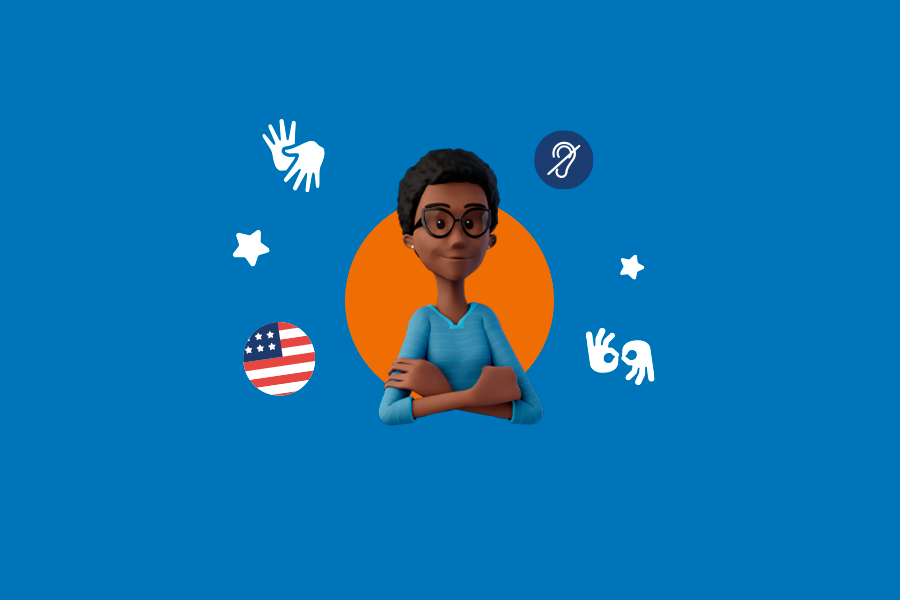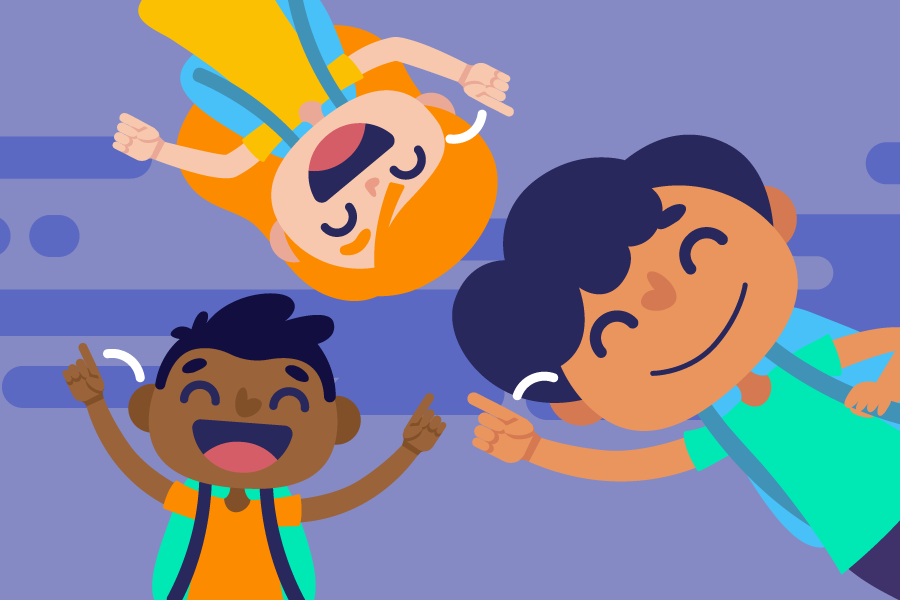
ASL Interpreters: what they do and why they are important

We often share interesting facts and curiosities about the deaf community here on the Hand Talk Blog, and for that reason, we could not skip talking about the professionals who play a crucial role within it: ASL interpreters.
Whether they are deaf or hearing individuals, ASL interpreters are responsible for facilitating communication in a neutral manner, ensuring access to information for deaf people who communicate using American Sign Language.
It is quite common to notice these professionals participating in political campaigns and federal announcements, but their presence in the lives of the deaf community goes beyond what you may imagine. The role of ASL interpreters is also essential in schools, cultural events, and even medical consultations. However, for a person to perform this type of work, they must have the appropriate qualifications and specialization in their respective fields (corporate, legal, cultural, among others). Besides, since ASL is a living language, it constantly evolves and forms new vocabulary, and that is where professionals who stay updated shine in their field 😉
Why are ASL interpreters so important?
A significant portion of deaf individuals consider American Sign Language as their first language and use it to express themselves. You might be wondering, “If they can see, why do they not communicate with hearing individuals by writing on paper or reading available content?” Besides being inconvenient for not respecting the language used by the deaf person, this approach becomes inaccessible, since a substantial portion of this community faces difficulties with English and relies on ASL to obtain information. This does not mean they are illiterate or unfamiliar with English, but since these are distinct languages, even in their grammatical structure, deaf individuals prefer to communicate in their native language. Therefore, ASL interpreters become indispensable.
When companies or event organizers hire these professionals, they enable individuals who use American Sign Language to follow along with everything being said or displayed in the same way as everyone else. This promotes inclusion, access to information, and, consequently, engages the brand in building a more egalitarian society.
Are translators and ASL interpreters the same thing?
It is quite common for people to believe that translating and interpreting are the same thing, but there is a significant difference between these two actions. Translators are responsible for translating written language. ASL translators, for instance, convert content from books and documents from English into American Sign Language. On the other hand, interpreters work with signed or spoken languages, meaning they are involved in visual-spatial or oral-auditory modalities. For example, while someone is giving a lecture in English, ASL interpreters translate in real time what is being presented. Similarly, they can interpret what a deaf person is signing into English, allowing a hearing individual who does not know ASL to understand what is being said.
It is worth noting that the work of these professionals is not limited to ASL. There are other Sign Languages all around the world, because there is no universal Sign Language! One widely used and well-known sign language is Indo-Pakistani Sign Language, which is present in the communication of over 6 million people throughout India, Pakistan and Bangladesh. Another popular one is Russian Sign Language, native to Russia and many other former Soviet countries. Some ASL interpreters in the United States also learn different Sign Languages as a significant advantage in their work.
Are Hugo and Maya ASL interpreters?
No. There is another category of translators, called virtual translators. Hugo and Maya are Hand Talk’s virtual translators who, via artificial intelligence, convert text content into American Sign Language. They are present in places where human ASL interpreters face some difficulties, such as websites, portals, and blogs, where there is a large volume of information that is often updated. Imagine what it would be like if a company had to hire an interpreter to sign all the content on their website and need to call them to sign again every time information is updated? Where would they store all this material? It would be quite a complex task, would it not? This is where Hugo and Maya come into play!
We know that nothing can replace human interaction, and that is not our goal. However, with Hugo and Maya on websites, digital accessibility in ASL becomes a reality. Even though the virtual translator is different from a flesh-and-blood interpreter, it contributes to a more accessible digital world for deaf people who communicate using this language. Since less than 3% of websites in America are accessible to people with disabilities, initiatives like this break down significant barriers. This is work that complements rather than replaces that of ASL interpreters!
We greatly respect and admire the work of these professionals, and we rely on them in our daily life here at Hand Talk. They validate our content in ASL, supply new signs to our dear Hugo and Maya’s “brains,” and make adjustments when necessary. They also mediate communication between deaf and hearing individuals who do not know Sign Language within the team. We have nothing but love for this profession 🧡
Whether in the online or offline world, access to information is a right for everyone. And now you know who to turn to in each of these spaces to make your content accessible to the deaf community. If you want to have Hugo or Maya making your website accessible for the deaf community as well, then be sure to talk to our specialists!


